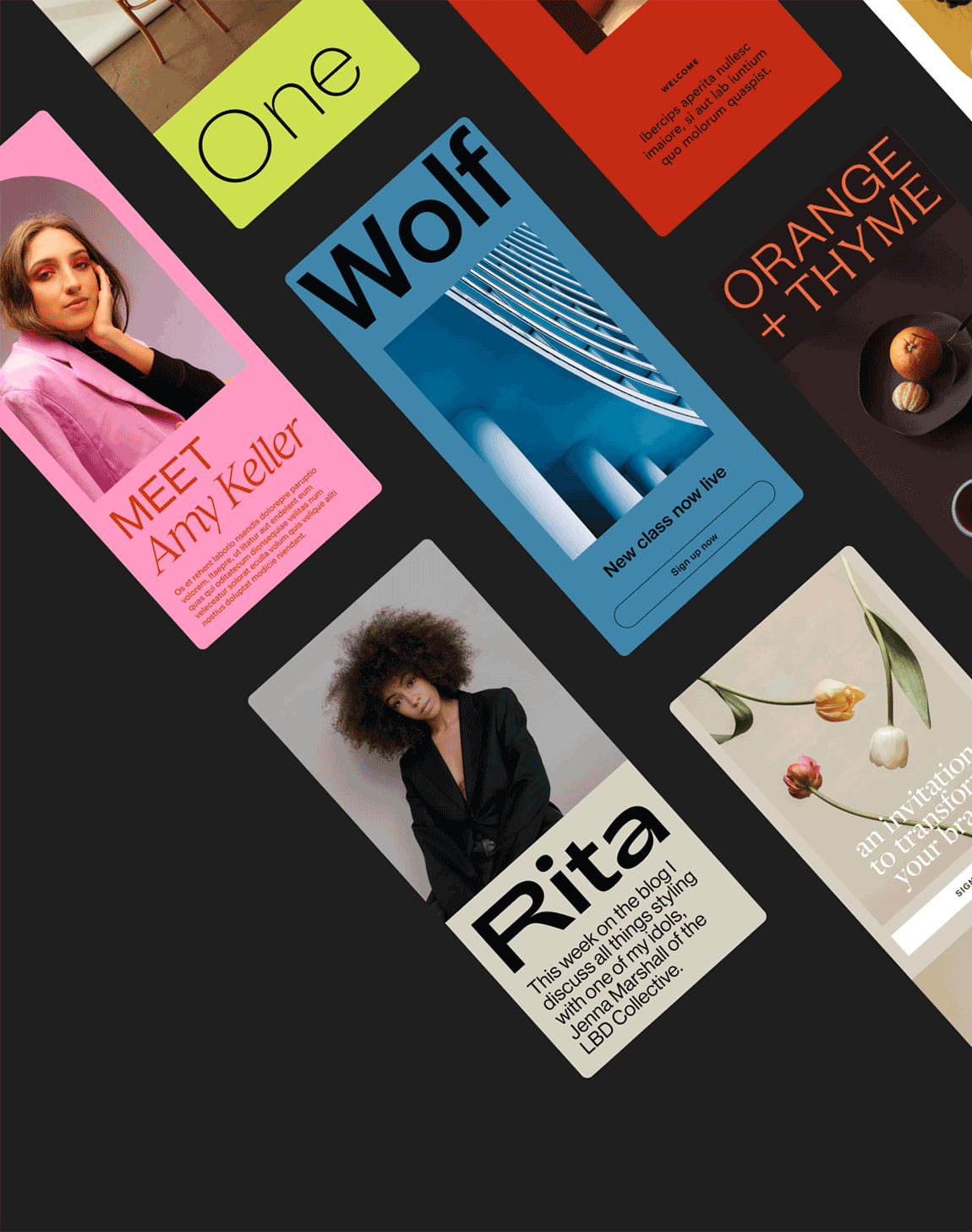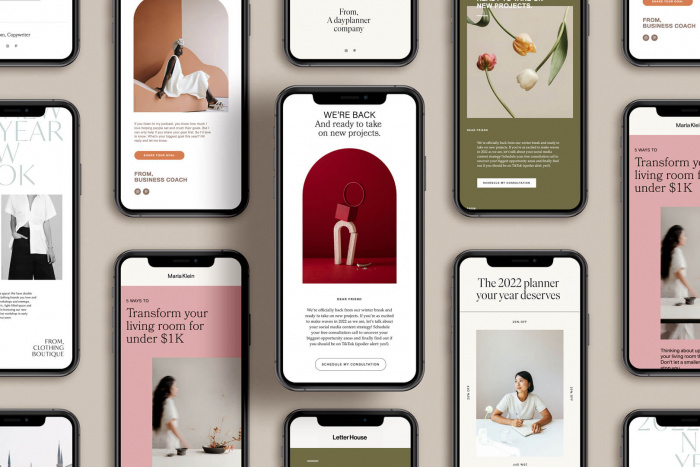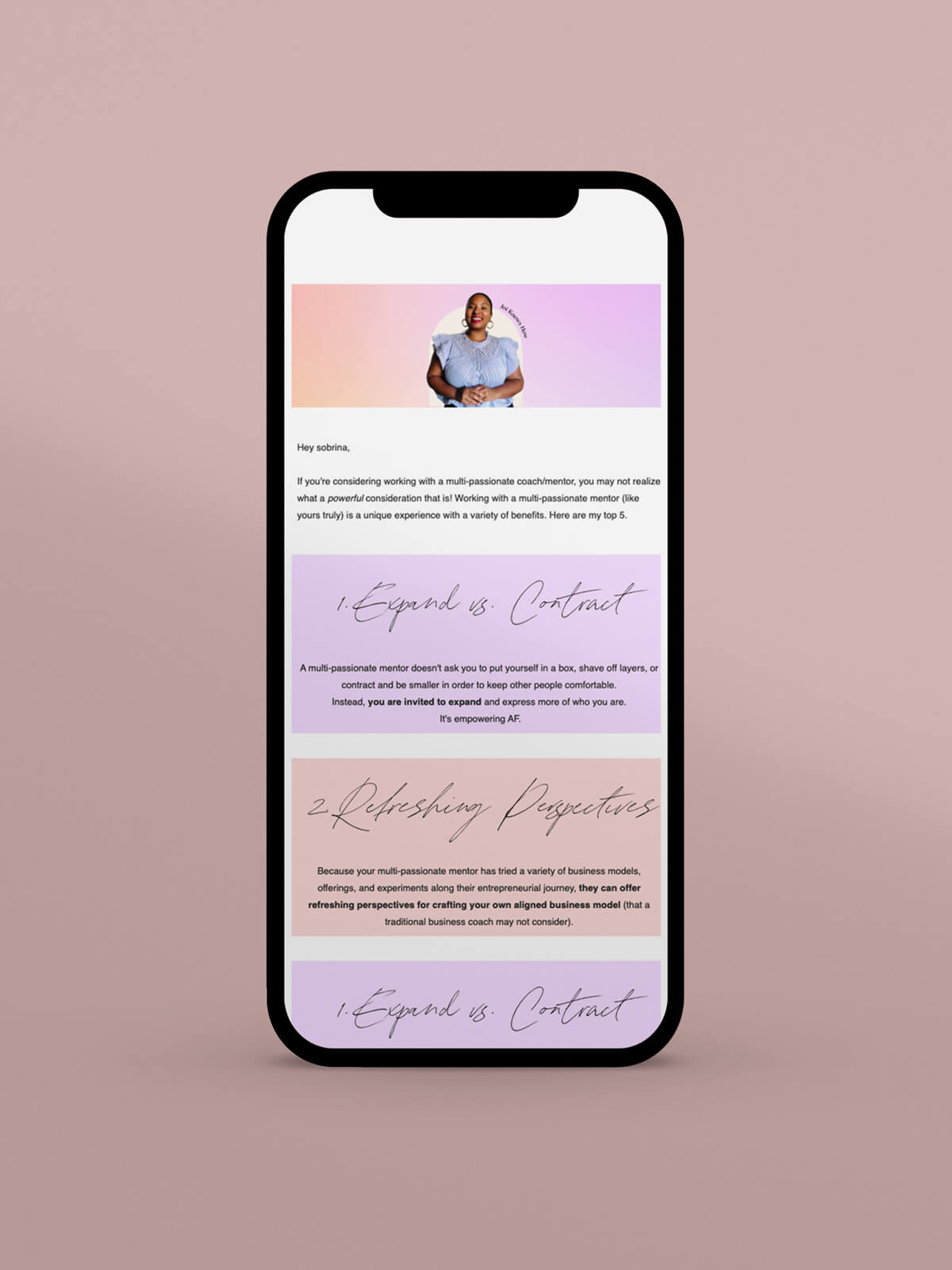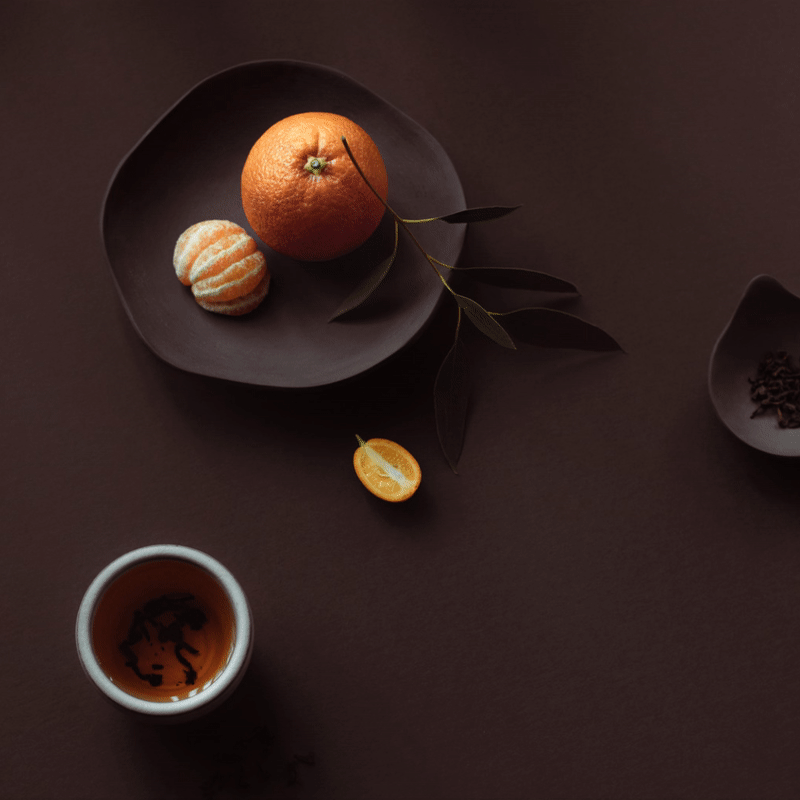How to upgrade your ‘just checking in’ email
Table of Contents Jump to:
Jump to:
Table of contents
How many of the follow-up emails you’ve received have encouraged you to respond or to take action?
Whether you reply to some, none, or all of them, the brands who chase interest usually win more business than those who don’t. In fact, only 2% of sales close during first contact(yes, really!) Followup emails are essential if you don’t want to miss out on up to 98% of your potential sales.
That said, SMBs need a better approach than a generic check-in email. You need an email that immediately grabs readers’ attention; a checking-in email that bypasses your recipient’s “generic garbage” filter and stops them from clicking the dreaded delete button.
If you’re unsure where to start, we’re here to help. We’ve compiled this list of 15 “just checking in” alternative phrases and emails to help you win back disengaged subscribers and increase conversions.
The problem with the ‘just checking in’ email
There is something slightly irritating about the phrase “just checking in.” It’s used excessively and serves no real purpose. A “just checking in” message is almost always followed by the real reason for getting in touch and while it may seem polite to segue from this into your request, it often ends up coming across as slightly passive-aggressive instead.
For example:
“Hi there,
I’m just checking in!
We’ve noticed you haven’t confirmed your subscription yet and wanted to make sure you received our welcome email.”
Here’s the problem with these types of emails:
- You’re checking in the moment you send the email—there’s no reason to clarify this
- They don’t elicit any response or action from subscribers
- These emails generally lack any valuable detail or content
- They’re not memorable emails
Why send a follow-up email at all?
Don’t ditch follow-up emails just yet. There are plenty of benefits to following up with a subscriber after a certain action. In fact, 60% of subscribers reject offers four times before making a purchase—which emphasizes that persistence is key.
It’s about more than just sales—it’s all about nurturing your relationship with your audience. Here are just a few key reasons you should follow up on previous emails:
- Keep your subscriber list clean. Following up is a great way to spring-clean your prospect list by removing people that aren’t interested in your offering
- Build brand trust. Maintaining contact with your audience builds trust and shows them you care about the relationship
- Increase conversions. As previously mentioned, persistence can encourage subscribers to make a desired action—follow-ups can help maximize conversions
- Optimize email sequences for engagement. Perhaps your first email ended up in a spam folder or contained some errors. Sending a follow-up is the best way to correct these issues and ensure your emails are seen
Ready to Elevate Your ‘Just Checking In’ Emails?
Upgrade your email game with Flodesk. Sign up for our free trial to craft compelling ‘just checking in’ emails that resonate with your subscribers.

Alternative phrases to “just checking in”
Sending a follow-up email is clearly essential, but it might be time to swap out, “just checking in” for something more effective and personal. Here’s a list of alternative phrases to “just checking in” that you can use for a follow-up message with leads and subscribers:
- Hope you’re doing well!
- Wanted to touch base with you
- Checking up on how things are going
- I thought I’d reach out and see how you’re doing
- Dropping in to see if you need any assistance
- Making sure everything is going smoothly for you
- Taking a moment to see if there’s anything you need
- Just wanted to see if there’s anything I can help you with
- Sending a quick message to see how you’re progressing
- Reaching out to ensure your satisfaction with our service/product
- Wanting to make sure you’re satisfied with your recent experience
- Following up to see if there’s anything else we can do for you
- Checking on your progress and here to help if you need it
- Dropping a line to see how you’re enjoying our product/service
- Just wanted to see if you have any questions or concerns
Remember to tailor your message based on the context and the relationship you have with your audience. Personalization and genuine interest in their well-being will help strengthen your communication.
15 Alternative emails for your next follow-up
Many of the alternate sales follow-up and re-engagement emails examples below use email best practices and the core principles of sales psychology to trigger powerful, often unnoticed cues that subconsciously influence readers to respond.. .
Explore our roundup of 15 alternative follow-up email examples to inspire your next customer re-engagement email.
1. Offer an exclusive discount
Discounts are a powerful motivator. If you have a discount you can offer, this is a great way to follow up with subscribers and get a response. If you can, it’s best to make the discount exclusive, too.
Example: “We’re giving five businesses an exclusive 20% off their next purchase, and we don’t want you to miss out.”
Here’s a beautiful example of a discount email built with Flodesk:
2. Offer a freebie
Gifts often increase response rates. This is why freebie offers are such an effective and prevalent part of any sales process—they get subscribers to actively engage with emails.
Example: “We’re giving you a free sample of X. If you’re not completely satisfied then, you’re free to cancel–we won’t charge you a cent.”
3. Highlight a weakness (and give them your no-obligation fix for free)
Tell prospective customers what problems they have—and how you can fix them. With this approach, you’re providing massive value while encouraging a response. This involves slightly more effort than other follow-up emails, but can be a powerful conversion tactic. .
Example: “Your website’s home page has X errors that are damaging your Y. I’ve attached a quick fix that will help save you Z. Feel free to use it, no strings attached. I just want to help!”
4. Offer a free trial extension
If you offered prospects a free trial and it didn’t go well, you can offer to extend their trial. This is a great way to stay connected with potential customers and give them more time to make a decision.
Example: “Need more time to trial our service before you decide whether to upgrade to a paid plan? Claim your 3-month free trial here (with no obligation to renew).
Here’s an example of a free trail extension follow-up email from Buzzsumo:
5. Send them customer success stories
Social proof, like customer testimonials, can help increase purchases. This works best when you use an example, like a video or blog post, of someone who has similar problems or qualities to your prospect. You want to use an example that gets recipients excited and allows them to imagine themselves in the story.
Example: “Hi [recipient’s name], meet [customer name]. She achieved X by using our Y. Discover her incredible path to success and how you can achieve similar results.”
6. Give them relevant updates on your product and services
If you’re now offering that a must-have feature recipients were asking for, re-engage them with emails promoting your latest feature release. Provide a status update and consider throwing in a thank-you gift, too. Free samples or product trials can encourage churned customers to give your brand another chance.
Example: “You asked, we listened. We’re excited to let you know first—we’re now offering X! As a thank you, we’d like to give you Y.”
Combine Flodesk Email & Checkout
Flodesk empowers small businesses by combining product checkout and email marketing in one easy-to-use space

Popularity creates more engagement. If you’re gaining publicity, now’s the time to share it! Sending a relevant industry article or press coverage to your recipient could grab their attention and encourage them to “learn more.”
Example: “Hey [first name], Did you happen to catch [popular media source] listing us as one of the best/most popular X companies for Y?”
8. Show how you can help them beat their competitors
Highlight something their competition is doing well, and then show them how you can help them do it even better. Include a taste of actionable advice to back up your promises.
Example: “We know X’s secret. They’ve been using the Y strategy to increase their Z. It’s why they’re having such a profitable quarter. But here’s how we can help you do even better…”
9. Encourage subscribers to revisit a goal
Often, encouraging subscribers to revisit a particular goal they may have abandoned can prompt a swift response to your follow-up email. Use this approach carefully—ensure your message doesn’t antagonize or discourage readers
Example: “Hey [name], have you made progress on X—your goal for this quarter? If you’re still considering pursuing it, let me explain how I can help you”
10. Invite them to attend your exclusive event or webinar
An invitation to an exclusive event or upcoming webinar can make a subscriber feel special, especially if it’s a personal invite from someone significant—like the CEO or Founder of your brand.. Be sure to highlight what’s in it for them—like the specific problems attending will solve for them.
Here’s a great example of a webinar invitation email built with Flodesk:
Example: “Hey [name], our Founder, [name], would like to personally invite you to X. You’ll come away from the event with Y that will help you achieve Z.”
11. Celebrate their successes
Showing you’re genuinely interested in others’ pursuit of success can go a long way toward influencing purchasing decisions. Send a follow-up email just to celebrate something awesome your recipient achieved.
Example: “Hey [name], congrats on X—what an incredible achievement! I was especially impressed by Y and Z…”
12. Check in on a personal level
Reach out to subscribers like you would a friend. Mention something that’s important to your prospect, and show your interest and support. Don’t underestimate the power of building rapport—thoughtful conversation can lead to conversions.
Example: “Hey [name], what a week! I saw your post about X, and it seemed to light a fuse on [social platform]. Congrats, you should be proud! It made me think about Y. Has that ever crossed your mind?”
13. Highlight a common challenge
Share details about difficulties your subscribers have faced and ask if your recipient is facing them as well. As a bonus, hint at the solution to their problems.
Example: “Hey [name], is X giving you sleepless nights? A lot of people we talk to every day find it difficult, too. That’s why we developed Z.”
14. Inform them you’ve linked to their website
Let your prospect know that you value their expertise and recently linked to their website or article—helping to grow their brand awareness and boost SEO rankings. Be sure to highlight the benefits you expect this to bring them.
Example: “Hey [name]. You might start seeing a BIG jump in your website traffic soon. We’ve created a post on X and, since you’re THE name in X, we’ve included numerous links to your content. Thanks for helping our post be the best it can be!”
15. Check in on their experience with competitors
If you know that a prospect chose a competitor product or service instead of yours, consider sending a follow-up email one to three months afterwards. See if your prospect is satisfied with your competitor’s offer—and if there’s an opportunity to win them back.
Example: “Hi [name], how’s everything going for you with [competitor]? We know some of their customers are hitting roadblocks around this time—hopefully, that isn’t you! But if it is, we’re still here to help if you need it.”
What to include in your follow-up emails
Your follow-up emails should always:
- Put the focus on the prospect. Do this by using the words “you” and “your” as well as showing genuine interest in them
- Avoid being pushy. Be patient and show them you’re not there just to sell
- Have a purpose. If you don’t have a compelling reason to email them, don’t do it
Ready for Engaging ‘Just Checking In’ Emails?
Unleash the power of Flodesk’s intuitive email editor. Sign up for our free trial and create impactful ‘just checking in’ emails that leave a lasting impression.

When to send a “just checking in” email
There’s no one-size-fits-all answer to this. Each prospect is unique, so pay attention to where they’re at in your brand journey.
As a guideline, however, any of these situations can be ideal times to send a contact a follow-up email:
- They missed a scheduled call
- They promised to contact you after a certain amount of time and didn’t
- They cut contact after saying they needed some time to think
- They started a free trial but didn’t continue further
- They showed interest (via a phone or video call, face-to-face or video meetings, social media platforms, and more) but then went silent
You should send a follow-up email any time you have a good reason to—especially if your reason brings the recipient value.
Send beautiful “just checking in” alternative emails with Flodesk
Sending an email to check in with prospects is a best practice, but you need to approach it carefully to avoid the spam folder.
With Flodesk, you can choose beautiful email templates, make it yours, and send emails people love to get. Brilliant follow-up emails could be this easy. Promise. Try it free.
“Just checking in” email alternative FAQs
1 . What are the benefits of a follow-up email?
Following up can help you close up to 98% of potential sales. This can also help you build rapport and show subscribers or prospects that you’re interested in them.
2. How do you politely follow-up on an email?
Put yourself in the recipient’s shoes. Instead of taking an angle of, “Why haven’t you responded?” or the ever-transparent, “I just wanted to see if you’d looked at this yet,” try one of the alternatives in this blog post.
3. Why should you avoid “just checking in” emails?
Your follow-ups need to stand out in a crowded inbox and bring the recipient value. Sending a forgettable “just checking in” email isn’t likely to catch anyone’s attention or motivate interest—but using an alternative approach can.



